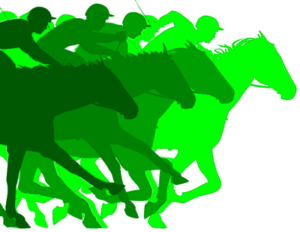Who was the first jockey to win the Welsh Grand National at Chepstow?
The Welsh Grand National was founded in 1895 at Ely Racecourse in western Cardiff – which, in its time, was the most important racecourse in Wales – where it remained until horse racing at Ely came to an end in 1939. The race wasn’t run again until 1948, at Caerleon Racecourse, on the northern outskirts of Newport, but that course also closed later the same year.
The Welsh Grand National was transferred to Chepstow Racecourse in 1949 and has remained at the Monmouthshire venue ever since. The inaugural running at Chepstow was won by Fighting Line, trained by Ken Cundell, father of Peter, and ridden by none other than Richard Stanley ‘Dick’ Francis. Of course, Francis would go on to ride 350 winners and win the National Hunt Jockeys’ Championship in 1953/54 but, having only turned professional the previous April, the Welsh Grand National was his most important win to date.
Francis would have won the Grand National proper, too, but for the inexplicable collapse of his mount, Devon Loch, on the run-in in the closing stages of the 1956 renewal. The shadow of the water jump, the noise of the crowd, false ground and cramp have all been blamed for the puzzling incident, but ESB, the principal beneficiary, was arguably the luckiest National winner in history.
 SP stands for ‘Starting Price’ and refers to the odds offered on winning, or placed, horses in the event that a punter does not take fixed odds – in the form of an ‘early’ or ‘board’ price – at the time of placing the bet. Historically, the integrity of the starting price system has been overseen by the independent Starting Price Regulatory Commission (SPRC), which employs a team of Starting Price Validators to collate betting information from on-course bookmakers. Starting price is determined by sampling bookmakers offering standard each-way terms and is defined as the market price generally available to ‘good’ money – that is, to lose at least £500 – at the ‘off’.
SP stands for ‘Starting Price’ and refers to the odds offered on winning, or placed, horses in the event that a punter does not take fixed odds – in the form of an ‘early’ or ‘board’ price – at the time of placing the bet. Historically, the integrity of the starting price system has been overseen by the independent Starting Price Regulatory Commission (SPRC), which employs a team of Starting Price Validators to collate betting information from on-course bookmakers. Starting price is determined by sampling bookmakers offering standard each-way terms and is defined as the market price generally available to ‘good’ money – that is, to lose at least £500 – at the ‘off’.